Employee Onboarding Best Practices: The Ultimate Guide
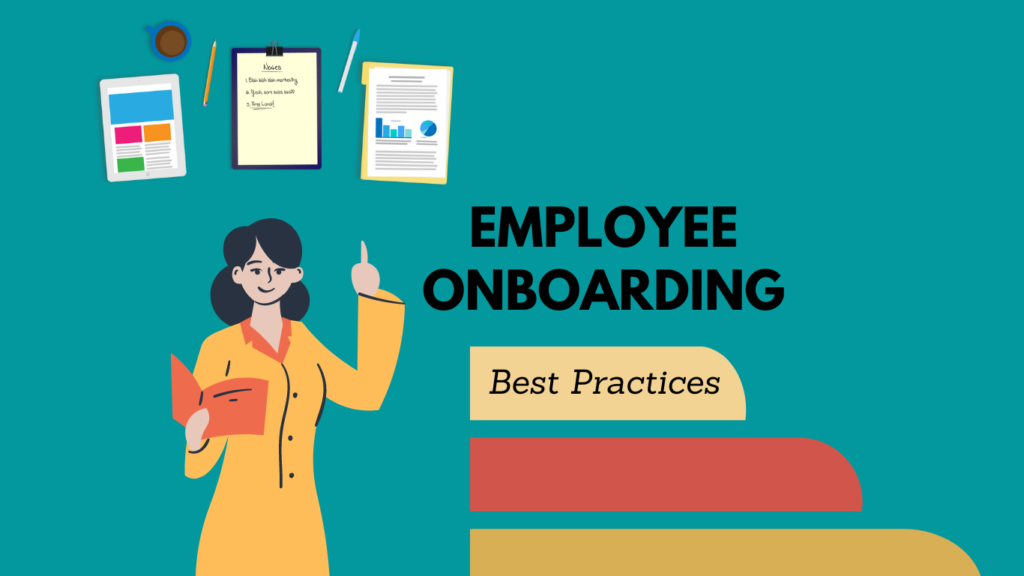
Employee onboarding is the process of integrating new employees into an organization. In spite of how sometimes onboarding can be a long and daunting process, with the right employee onboarding best practices and strategies in place, it can be a smooth and effective experience for both the employee and the company!

A high employee turnover rate, or the rate at which employees leave a company is a demanding issue to address. According to the Society for Human Resources Management, up to 20% of employee turnover happens in the first 45 days, which can have a negative impact on the bottom line of any company.
Due to limited resources and human investment, the negative impact on small businesses can be particularly severe, especially considering the cost of replacing an employee. It’s estimated that losing an employee can cost a company 1.5-2 times the employee’s salary.
It’s not rocket science: Employees who are happy in their positions are less likely to leave, therefore high turnover is usually a sign of a problem.
But, what is the relation between high employee turnover and the employee onboarding best practices? Take a look at these stats!
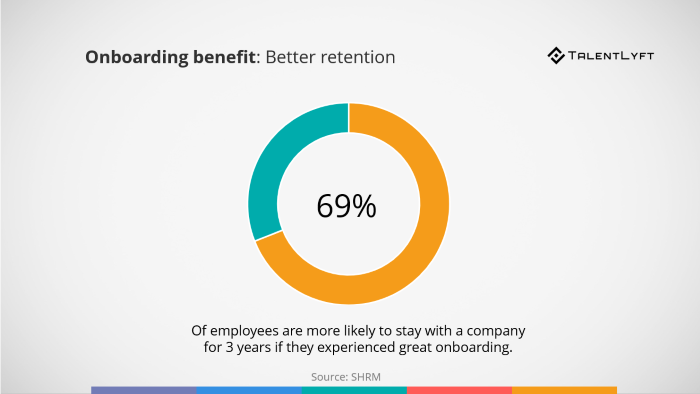
- 69% of employees exposed to great, solid onboarding programs are most likely to stay in the company for a period of 3 years.
- 29% of employees said their company could help properly onboard them, which they believe is critical to be better prepared to start with their new position.
- 77% of employees who received a formal onboarding introduction were able to meet their first performance goals.
Yet, almost a quarter of businesses are not implementing the employee onboarding best practices or are lightly taking this topic. Onboarding programs are being overlooked!
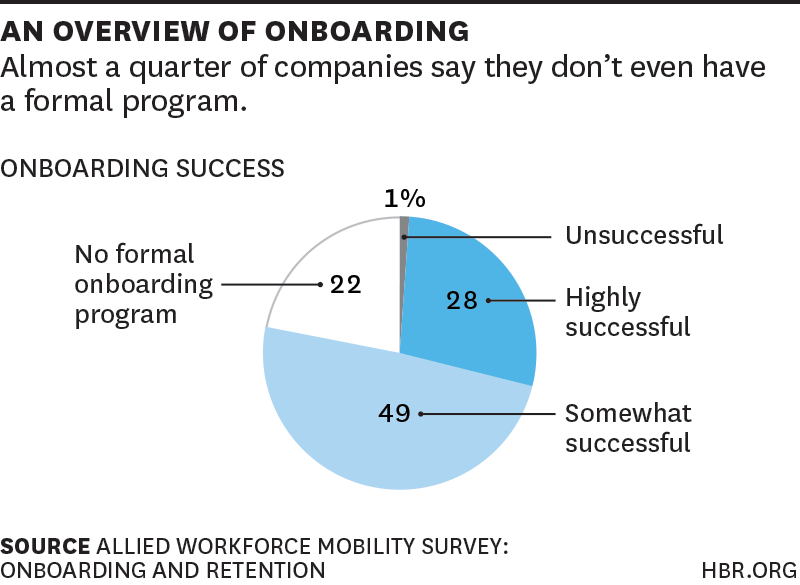
- A good onboarding program is a proven ROI retention strategy and is the door to the employee experience in the company.
The Purpose of An Onboarding Program
The employee onboarding is aimed at the effective acclimation and integration of new hires (or current employees after being promoted or transferred into a new role).
It involves assessing, defining, and aligning the needs of the new hires with the company values and reinforcing the organization’s vision and strategic priorities.
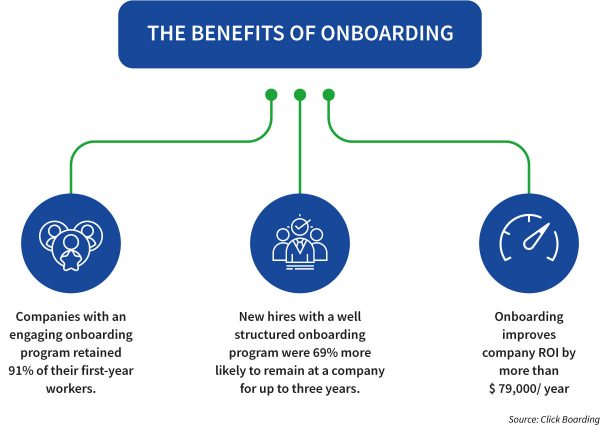
- An onboarding program is a proactive process intended to substantially improve a new hire’s ability to understand the culture, contribute to the team, develop meaningful relationships, enhance employee satisfaction, understand the team leadership and, ultimately, perform at his or her best.
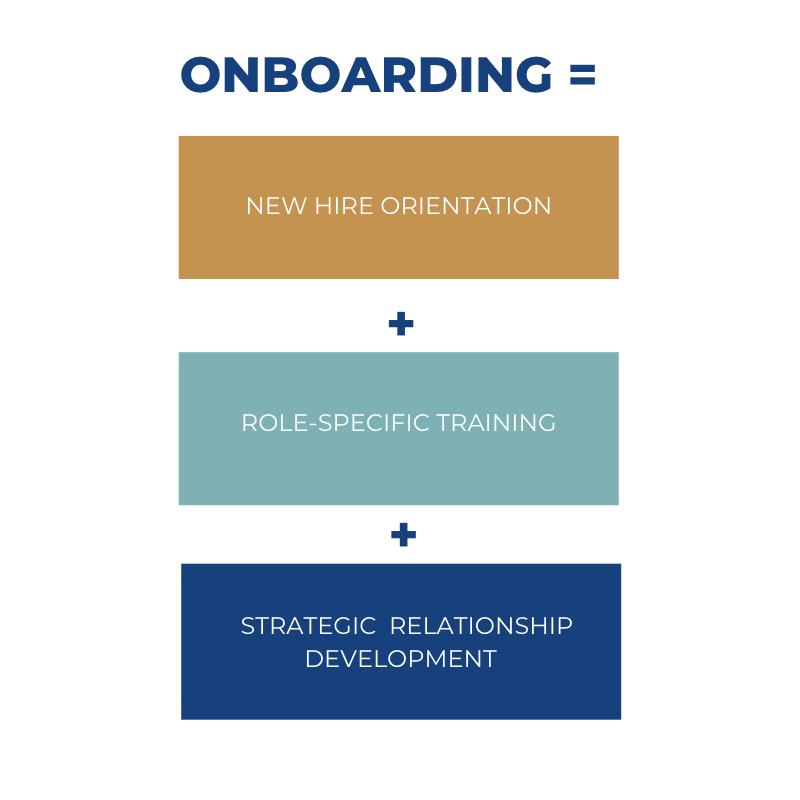
Employee Onboarding Best Practices vs Employee Orientation
Employee onboarding and new hire orientation are two separate processes, yet far too many managers fail to recognize the difference. The organization, the culture, the supervisor, and the success of the new hires can be hindered by this lack of clarity.
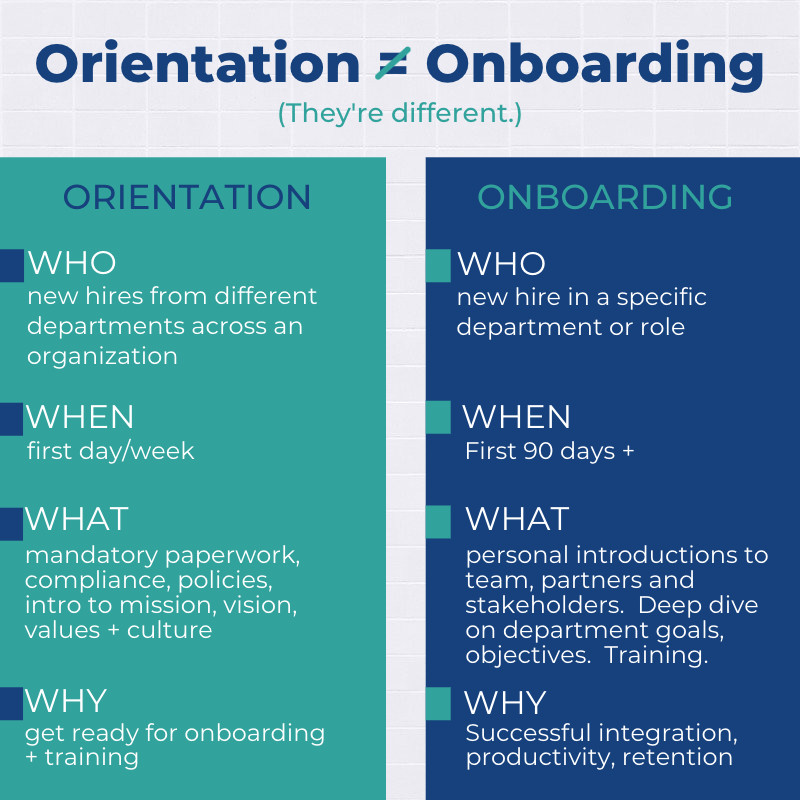
The employee onboarding process is as different from employee orientation as training is from management consulting, and it is just as important for long-term success as a company’s vision, performance management, and effective leadership.
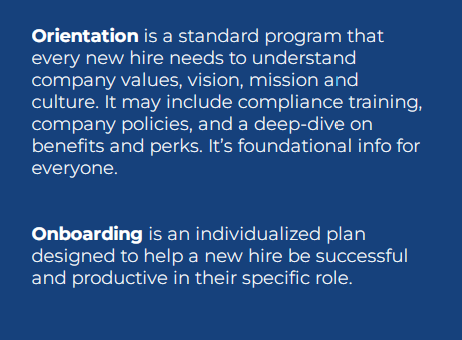
As you can read, the onboarding of the new hires should not be confused with orientation, which is simply the process of introducing a new employee to the company.
Orientation typically consists of administrative tasks such as completing new hire paperwork, learning about benefits and policies, and meeting other employees, and the new team.
Onboarding vs Orientation: The Main Differences
Purpose
- The goal of the onboarding programs is to ensure that the new hires have a successful, long-term tenure with your company.
- The goal of orientation is to introduce new employees to the company.
Length
- Onboarding should last between three and six months.
- Orientation should last one to two days.
Tasks
- Onboarding tasks include introducing the new hire to the company culture, providing them with the tools they need to be successful, and making sure they have a good relationship with their supervisor.
- Orientation tasks typically include completing paperwork, learning about benefits and policies, and meeting other employees.
The Role of a Manager During Employee Onboarding Best Practices
One of the most important aspects of employee onboarding is the role of the manager. The manager is responsible for orienting and integrating the new hires into the company.
In this case, they are also responsible for ensuring that the new employee has a positive experience and is productive from day one.
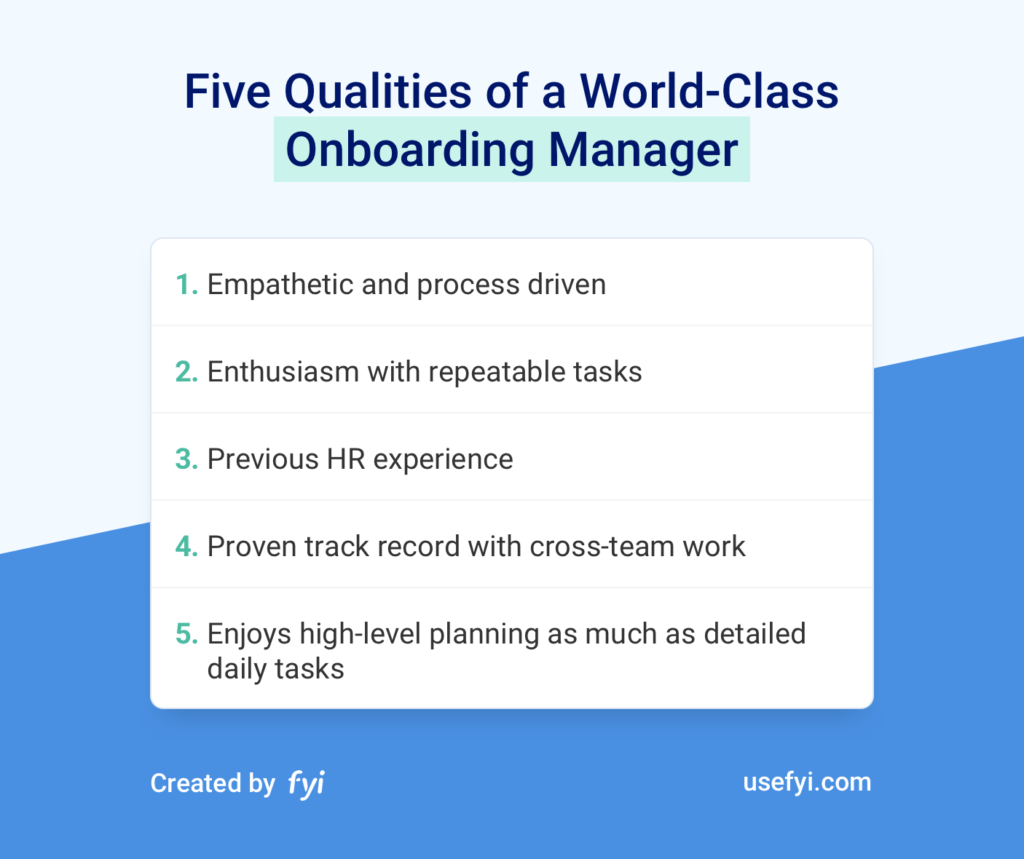
In most cases, the manager is heavily involved in the employee onboarding process. They are responsible for creating and/or overseeing the onboarding plan, setting up introductions and meetings with team members, and providing training and orientation on company policies and procedures.
As well, they should keep in touch with the new employee regularly to ensure that they are adjusting well to their new position.
What Are Some of the Most Common Mistakes Companies Make during Employee Onboarding Programs?
According to a study by SilkRoad, the top five mistakes are:
- Lack of preparation or planning – not having a plan in place can lead to disorganized and chaotic onboarding programs.
- Focusing too much on administrative tasks instead of the employee’s actual job – making sure the new employee is oriented and productive as quickly as possible should be the main goal of onboarding, not just getting them set up with company email and computer login.
- Not providing enough support or follow-up – an overwhelming new job can be even more difficult to navigate if there is no one around to offer help or answer questions.
- Lack of orientation to the employees about the company culture – this includes everything from the company’s values and mission to its social norms and politics.
- Not providing enough training – giving employees the tools they need to do their jobs is essential for effective onboarding.
The First Few Days and Weeks on the Job
During the first few days and weeks on the job, there are several things that you should do to make the transition smoother.
First, be sure to take some time to get to know the new hires. Get to know their name, their job title, and what they do. Ask them about their previous experience, education, and skills.
- This will help you better understand how they can contribute to the team and what areas they may need assistance with.
In addition, be sure to provide plenty of training and orientation on company policies and procedures. The new hires should be familiar with the company’s mission, values, and goals from the very beginning.
On the other hand, they should also be familiar with the team’s work processes and how they fit into the overall picture. Orientation should also include information on benefits, compensation, and other important topics related to the job position.
What Are the 5 C’s of a Strong Onboarding Process?
There are five key elements that make up an effective onboarding process:
- Communication
- Coordination
- Compliance
- Culture
- Coaching and Counseling
Communication
A key part of every onboarding process. The new hire needs to be kept up-to-date on what’s happening, and they need to have a chance to ask questions and provide feedback.
Coordination
An essential tool for ensuring that all the components of the onboarding process are working together smoothly. This includes things like scheduling training, arranging meetings with supervisors, and getting access to company systems.
Compliance
Very important for making sure that the new hire understands and follows all the company policies and procedures.
Culture
One of the most important elements of onboarding. It’s essential for the new hire to understand the company culture and how it influences their work.
Coaching and Counseling
Highly important for helping new employees adjust to their new job and to the company culture. Supervisors should provide regular feedback and support to help the new hire be effective.
Now that you understand the basics behind employee onboarding, let’s take a look at some of the best practices!
Employee Onboarding Best Practices for the New Employee: The Ultimate Guide
- ATTENTION! Before starting their job, the employee should be familiar with all of the tools and resources they will need. This includes computer software, company procedures, and any other resources that may be specific to their job.
It can be a challenge for managers to ensure that the onboarding program is effective, especially when there are so many things to consider.
In order to make the process easier for both you and your employees, here are some of the best onboarding practices to follow:
Give the Employee a Clear Overview of the Company and Its Culture
It’s important for the employee to have a clear understanding of the company’s vision and values. Thoroughly orient the employee to your company identity during onboarding.
This includes everything from the company’s history and values to its social norms and politics. Make sure that they understand how their job contributes to the overall success of the company.
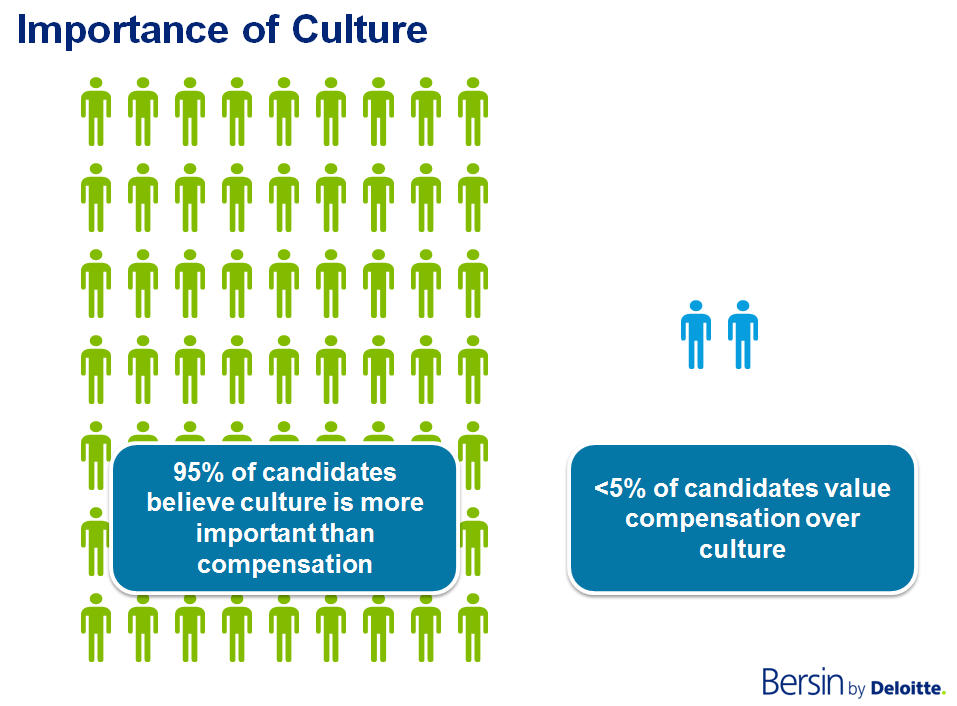
Company culture is one of the most important aspects of a workplace, and it’s something that new employees will be looking for.
If they don’t feel that the company identity is a good fit for them, they may be less likely to stay with the company for the long term.
TIP: This can be done through an overview document or presentation, or by having the employee meet with other employees who will share their experiences working at the company.
Assign a Buddy or Mentor
A buddy or mentor can help guide and support new employees as they get settled in. This person can provide advice on work-related matters, as well as help with networking and building relationships within the company.
- Networking with coworkers is an important part of building a successful career. The sooner the employee starts networking, the better.
TIP: Make sure to introduce the employee to their coworkers. This can be done in a group setting or one-on-one.
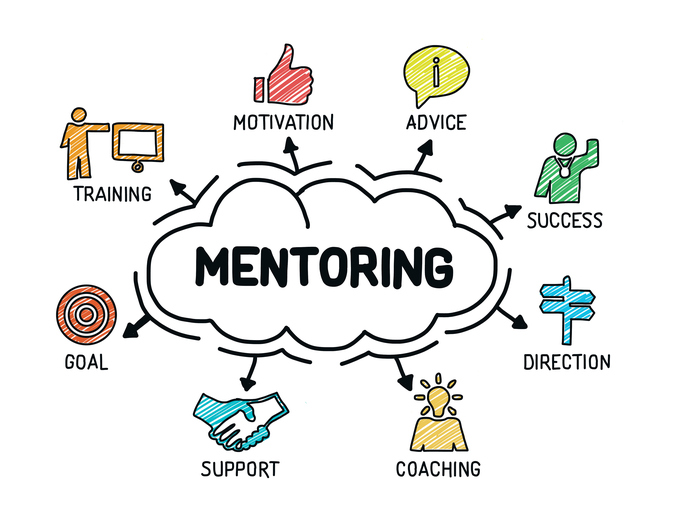
It can also be helpful to connect new employees with veteran employees who have been with the company for a while. These employees can share their experiences and offer advice on how to navigate company politics and culture.
Keep in Touch Regularly
The first few weeks of a new job can be overwhelming.
It’s important to make sure that the employee is adjusting well and ask if they have any questions or concerns. Offer help and support when needed, and connect the employee with other resources if necessary.

TIP: Supervisors can provide feedback in a meeting, through email, or even a formal written review. Constructive criticism is an important part of growth, but it should be given in a way that is helpful and not discouraging.
Give the Employee Access to Company Resources
The employee should have access to all company resources, including policies, procedures, and contact information. It’s also a good idea to provide the employee with a computer and email address.
TIP: Provide a welcome package with plenty of resources available (including online resources and an employee hotline) so that the employee can get the answers they need.
Encourage the Employee to Ask Questions
The onboarding process is a time for learning, and the employee should feel comfortable asking any questions they have.
TIP: Have a designated question-answering resource, such as a human resources representative or an onboarding specialist, or just a question box or email address where employees can submit their questions anonymously.
Celebrate the Employee’s Success
79% of employees in the United States leave their jobs because they feel underappreciated, while 78% stated they would work harder if they get receive more recognition, according to GloboForce.
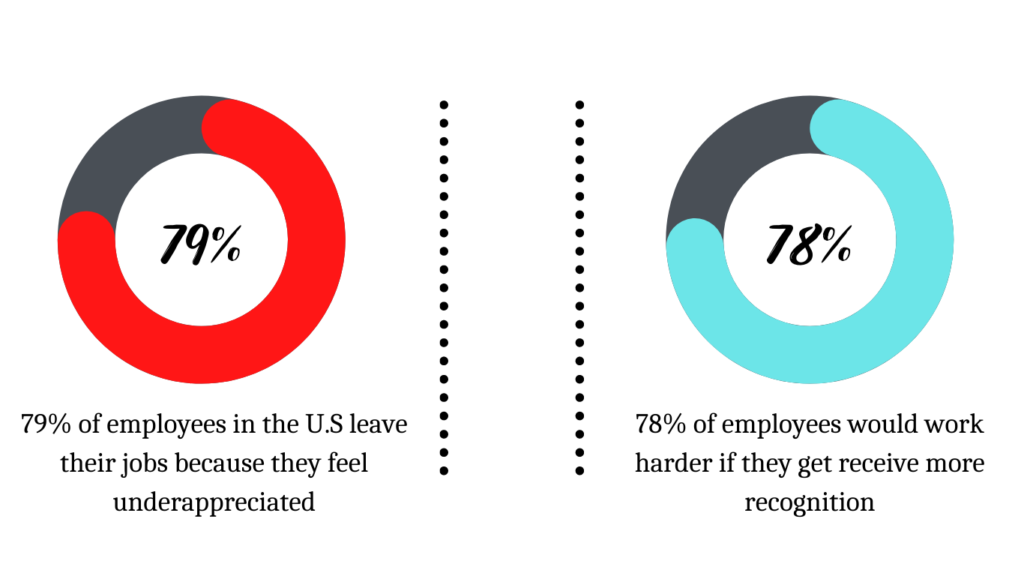
Many people have the habit of completing one objective and then moving on to the next. This may work in the short term, but if left overlooked, it can lead to burnout, unhappiness, and a lack of drive.
- When achievement isn’t recognized, it can be demoralizing. Make sure to celebrate both small and big milestones.
TIP: This could include sending a congratulatory email, arranging a luncheon for the team, or giving the employee a gift card.
Nice Welcome & Workspace Orientation
According to Glassdoor, 17,3% of job offers are rejected, it’s getting more difficult for employers to convince candidates to accept offers.
Make sure the first day starts with a well-thought-out workplace orientation. To motivate the new hire, choose an interesting and engaging program. Send a welcome email!
TIP: Some companies have begun to implement gamification, scavenger hunts, boot camps, workplace trivia, and other innovative activities. Again, use a welcome package, add some souvenirs like Facebook!

Likewise, with these best practices, you can create a booming onboarding process that will help your new hire feel welcome and prepared for their role at your company.
Employee Onboarding Best Practices: The Art Behind
The first step in onboarding is to create a plan. This plan should outline the steps that need to be taken to get the new hire up to speed and fully integrated into the company.
It should include:
- The tasks that need to be completed before the employee’s first day
- The training that will be provided
- The policies and procedures that the new employees will need to learn
- Who the new hire’s supervisor will be and how they can contact them
Once the onboarding program is in place, it’s important to communicate it to all those who will be involved in the onboarding process. This includes the new hire, their supervisor, the HR department, and anyone else who will be contributing to the process.
The next step is to prepare for the employee’s arrival. This includes:
- Setting up their workstation
- Getting them access to company systems and software
- Providing them with any necessary materials or equipment
The first few days should be devoted to completing any tasks that were outlined in the onboarding plan, as well as completing any training that was scheduled.
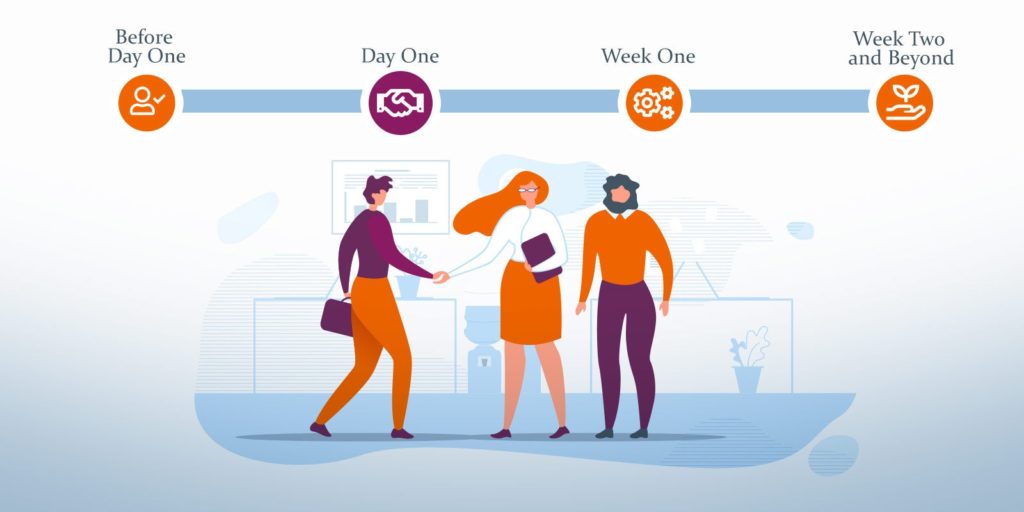
After the first few days, it’s important to continue providing support and guidance to the new hire. They should be encouraged to ask questions and to get involved in company activities.
- The onboarding should not stop until the new hire is fully integrated into the company!
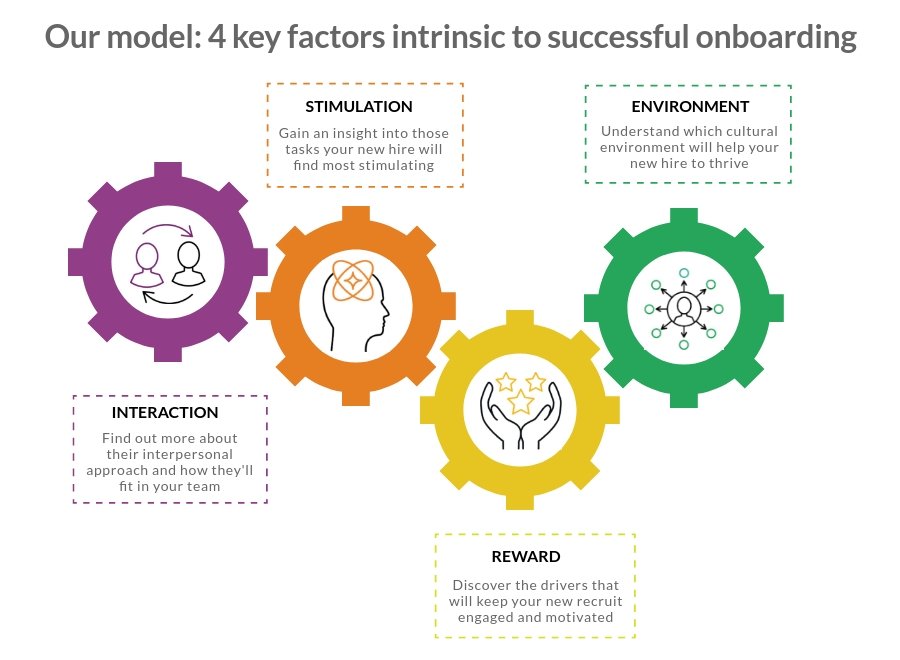
Onboarding Tools: Software and Resources
Several tools and resources can help make the onboarding process easier and more efficient.
Here are some of the most common ones!
Employee Onboarding Software
This software helps automate the onboarding process, making it easier and faster to complete all the necessary tasks. It can also help track and monitor the progress of the new hire.
Employee Onboarding Templates
Templates can help organize and simplify the process of onboarding a new hire. They can provide a step-by-step guide for completing all the necessary tasks, and you can customize it to fit the specific needs of your company.
Onboarding Checklists
Checklists can help ensure that everything is done during the onboarding process. They can also be used to track the progress of the new hire and to ensure that all the necessary training has been completed.
Company Policies and Procedures
The new hire needs to be familiar with the company’s policies and procedures. These documents can help provide information about things like dress code, attendance, time-off policies, and the company’s values and mission.
Training Resources
The new hire needs to be provided with the necessary training to do their job effectively. This includes things like safety training, product training, and system training.
Many other resources can help with the onboarding process, including books, articles, and online courses. It’s important to find the resources that best fit the needs of your company and your new hire.
Tips for A Smooth Onboarding
Although onboarding best practices vary by company and position, but there are some general tips that can help make the process smoother for everyone involved:
Plan Ahead
The onboarding process should be planned out in advance, and the new hire should be given a schedule of what to expect. This will help ensure that there is no confusion or chaos during the first weeks on the job.
Be Flexible
The employee onboarding process should be flexible enough to adapt to the needs of the new hire. If something isn’t working or if they have questions, they need to be able to easily get in touch with someone who can help them.
Provide Resources
New hires should be provided with all the resources they need to succeed in their new job. This includes things like training materials, company policies and procedures, and contact information for supervisors and coworkers.
Monitor Progress
The employee onboarding process should be monitored to ensure that the new employee is adjusting well to their new role. Supervisors should provide regular feedback and support to help the new employee be successful.
By following these best practices, you can create an effective onboarding process that will help the new employees feel welcome and prepared for their roles at your company.
Remote Employee Onboarding Best Practices
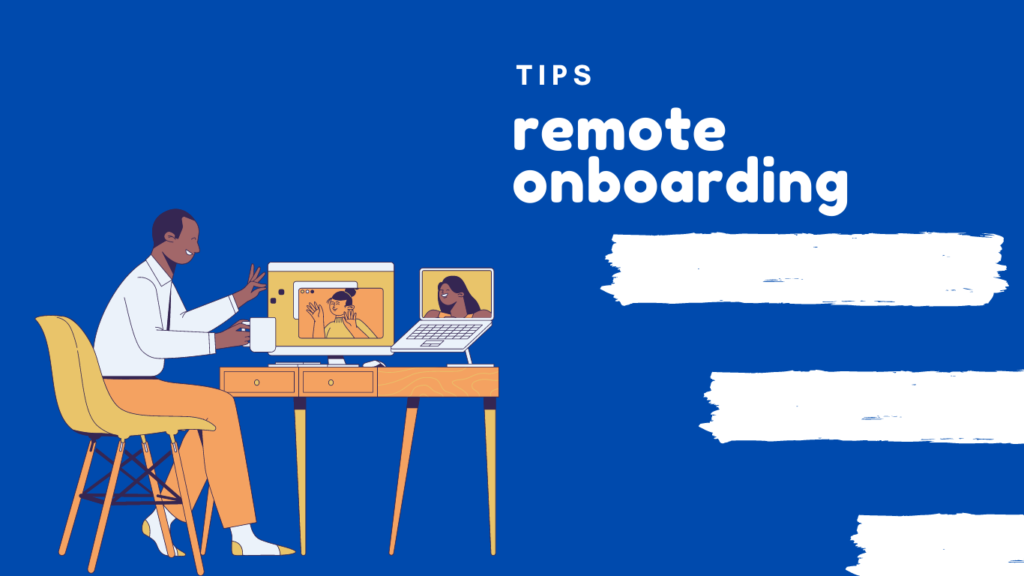
The goal of remote onboarding is to make the process as easy as possible. Taking into account, this is especially true in a hybrid workplace where you want to ensure that each new hire has a similar, excellent, and efficient experience.
Follow these tips!
- Create a Remote-Friendly Onboarding Process
Employees who work remotely need a different onboarding process than those who are in the office. Make sure to create a process that is tailored to their needs and that includes plenty of communication and coordination.
- Provide Resources
New hires working remotely need access to all the same resources as those in the office. This includes training materials, company policies and procedures, and contact information for supervisors and coworkers.
- Monitor Progress
Just because they’re not in the office doesn’t mean you can’t monitor their progress. Supervisors should provide regular feedback and support to help new employees working remotely be successful.
Employee Onboarding Best Practices: The Bottom Line
Onboarding is an important process for both the new employee and the company. It’s a time for the new employee to learn about the company and their job, and it’s a time for the company to get to know the new employee.
By using the employee onboarding best practices and strategies, you can make the process smoother and easier for everyone involved. The new employee will be able to learn and grow their skills, and the company will benefit from having a fully integrated team member.
Frequently Asked Questions
What Are the 4 Phases of Onboarding?
There is no standard definition of the four phases of onboarding, but most experts agree that they include:
- Pre-boarding – preparing the new employee for their arrival
- Onboarding – introducing the new employee to their new job and surroundings
- Training – teaching the new employee how to do their job
- Integration – helping the new employee become part of the company culture and team.
How Long Should the Onboarding Process Last?
The onboarding process should last as long as necessary to ensure that the new employee is fully integrated into the company. This can vary depending on the size and complexity of the organization, as well as the position of the new employee. Typically, it will take around 3-6 months.
What Makes a Good Employee Onboarding Experience?
There is no one-size-fits-all answer to this question, but a good employee onboarding experience should include:
- Flexibility – the process should be adaptable to the needs of the new employee
- Resources – Provide to the new employee with all the resources they need to succeed
- Regular Feedback and Support – supervisors should provide regular feedback and support to help the new employee be successful.
What Are the Benefits of Employee Onboarding Best Practices?
Certainly, employee onboarding best practices have many benefits for both the new employee and the company, including:
- Reduced training time and costs
- Improved productivity and performance
- Reduced staff turnover rates
- Greater job satisfaction and a better fit for the company culture.
Is There a Standard Employee Onboarding Process Checklist?
Even though, there is no standard onboarding checklist, most companies will have some or all of the following items:
- Contact information for supervisors and coworkers
- Company policies and procedures
- Training materials
- Computer login information
- Any other relevant paperwork or documentation.


